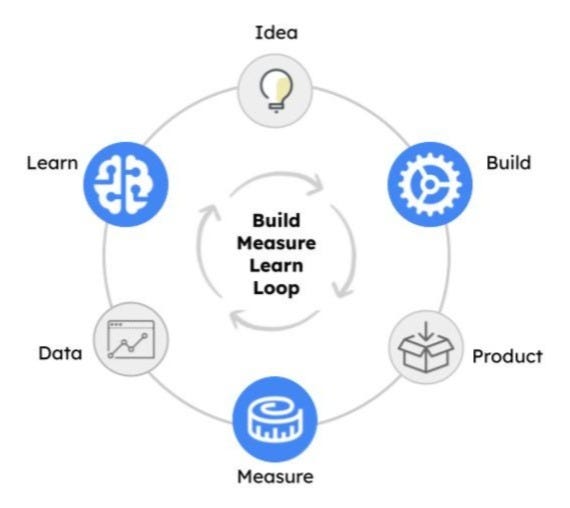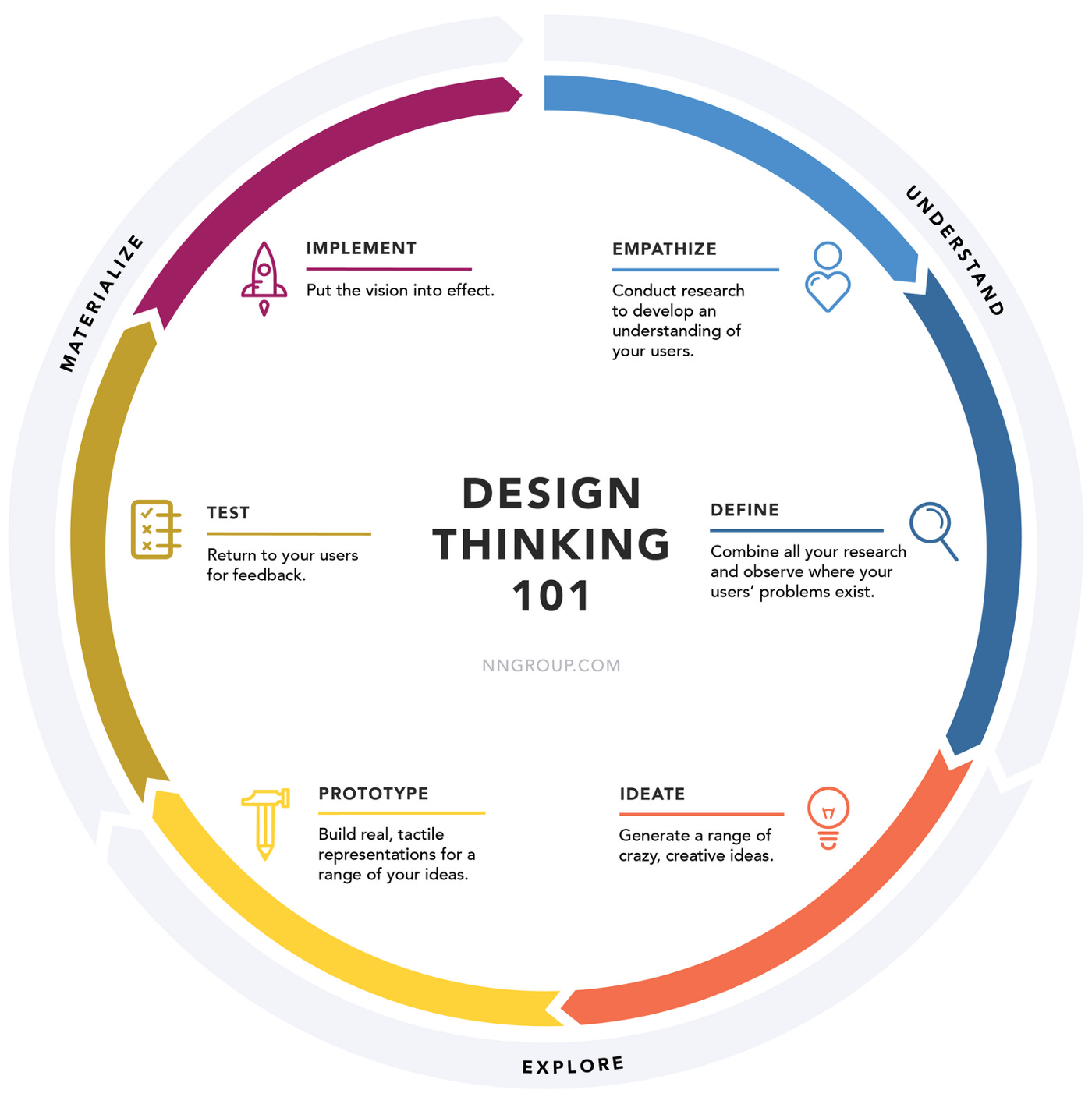Summary
This post introduces Design + Build, one of the six Association Product Competencies. In doing so, we address the importance of leveraging underutilized value, talk about sources of leverage, introduce the Build Measure Learn Loop, and cover the high level fundamentals of Lean Product Development and Design Thinking.
The Product Community is a product development learning community designed specifically for associations.
Leverage What You Have
Associations largely don’t have the time, resources, capability, or culture to build new products, programs, or services from scratch.
We can, however, leverage our good work, tease out the valuable — the things that stick, the things that people keep coming back for — and learn how to spin this found value into new things that connect members and keep them coming back for more.
When we say “things”, we mean products. When we say products, we mean the indispensable value that we use to identify, motivate, excite, and serve our members.
This value can be anything as simple as a podcast, webinar, simple game, or short course; it can be as complex and multifaceted as a piece of software or a carnival-like, choice-driven vehicle like an annual meeting.
Great value has a powerful and social pull effect.
Once we learn the power of leverage, we can iterate on our successes, find focus, and get better and better at product development.
Design + build is one of six association product competencies; the other five are: culture, vision, customer, go to market, and performance.
Though it’s certainly possible to develop the next big thing from scratch, the key to product success in associations is driven by leveraging current yet often underutilized value and teasing out how this value can be re-engineered into new possibilities.
Learning how to build and deliver that value in new ways requires a deep and sustained understanding of our customers and their pain points.
Empathizing with our customers helps us understand our target market so we can develop products they will enjoy, use, and share with their colleagues and friends.
Sources of Leverage
Instead of developing new products from whole cloth, our ‘big ideas’ come from existing value, which can be delivered in new ways, via different channels, or to new markets.
Identifying these sources of value can take some work.
For example, at the American College of Chest Physicians, a medical association in Glenview, Illinois, we worked with pulmonologists and critical care doctors who had myriad learning needs and ways of connecting:
Engaging in Immersive Learning. Simulation, gaming, and virtual and augmented reality.
Preparing for Boards. Board review courses, a vital element for continuing medical education, an on-demand question-based learning app, and spaced learning in which learners engage with peers and answer a question a day.
Keeping Current. Asynchronous content like podcasts, webinars, research, or newsletters.
Engaging Deeply. In-person, virtual, and hybrid events, workshops, and courses.
We clearly met the needs of our members. Our challenge wasn’t what or how much we were creating; it was helping our members navigate this value in ways that met their needs and pulled them into longitudinal journeys.
We needed to create a product portfolio so we could identify the interdependencies and discern comparative performance.
Over time, this became an exercise in identifying and framing value and making connections across disparate programs. It also made it easier to determine what was working, what wasn’t, and what could be leveraged, combined, or bundled.
Also, of all the things we developed and delivered, what could we spin off into a new product?
We were surprised at the nuggets of underutilized value.
We were less surprised at how arduous it can be to change practice in order to become more efficient across the boundaries of a complex association. It was much easier (though fragmented, inefficient, and duplicative) to do things the way we always did them.
How might be enhance our product development capability? We created a product community.
The Product Community utilizes processes and tools similar to leading product development operations (in software companies and physical product manufacturing).
We just do it in a way that fits – yet stretches and shapes and reflects – the association operating culture.
Lean Product Development
Design + build doesn’t happen in isolation. There are many frameworks and tools to design and develop new products.
As we’ve suggested, for associations, the best way to approach it is to build off existing program value.
Are there existing programs, processes, or practices that we can reuse?
Are there pieces or components of existing value that we can deliver or leverage in new ways?
Can we deliver a successful program in a new channel to a new market?
Are there things we currently do that we should stop doing (thereby freeing up valuable resources)?
Can we build and deliver something that satisfies the community while also telling us more about their wants, needs, and pain points?
Eric Ries, author of The Lean Startup, believes that all our activities should be in service of learning more about our members (though he uses the word customers).
That is, we need to build things that enhance connection, but also helps us gain new insights, connect dots, and design for engagement.
The Build Measure Learn Loop (Eric Ries) showcases how an association can identify an idea, build a minimally viable product (MVP), measure its effectiveness in the market, and learn from that experience.
Learning how and getting better at the BML Loop will help associations better determine if the ideas put into motion are good or should be discarded.
The loop generates innovation, as quick iteration allows association teams to identify the most viable way to make adjustments in order to optimize and improve the product for success.
Excel at Defining Problems + Developing Solutions
Product design + build is the process of empathizing with your customers, identifying an unmet market need, clearly defining the problem, developing a proper solution for that problem, and validating the solution with real customers.
Getting better and faster at this – with an emphasis on understanding and defining problems and developing and refining solutions – will help you break free from exhaustive and expensive yet unsure bets on the next big thing.
See the Lean Product Development (LPD) diagram (adapted from Roman Pilcher) to see how these iterative cycles work.
According to Richard Barry, before Lean Product Development (LPD), bringing an idea to market meant committing to an expensive investment in market research.
With LPD, that research is quickened by validating the problem and validating the solution with participation of your community.
It is easiest to think of it as two interlocking circles that feed into each other to ensure optimal deliverance of a product that is checked and cross checked in the real world. The first circle is Validate the Problem and the second is Validate the Solution.
This way, our associations are building and validating new products within the community as opposed to outside it.
If it’s possible to reduce product development to simple principles, it’s these:
Build and sustain empathetic relationships with our community.
Identify and ferret out ‘found + usable value’ (things people like)
Tease out possible leverage points for this value.
Learn (and get better at) the Build Measure Learn Loop.
Continue to iterate at defining problems and building solutions (and repeat and repeat and repeat).
Another, more methodical way to look at a product development process might best fit current association practice.
The process can be broken down into these rough seven steps (sometimes seven) and follows the basic cadence of a design thinking sprint:
Craft ideas. Analyze your existing product portfolio. What works? What doesn’t work? What do people like? What performs and why? Talk to your key stakeholders. What problems are they having? What are some possible ways to solve these problems?
Define the product. When all the viable ideas for the future product are on the table, you can highlight some general expectations (requirements) for its implementation. The result at this stage is a fairly abstract list to help determine direction.
Conduct (simple) research. Some basic market research can help you frame competition, define trends, and the product’s prospective longevity. The result of this research provides some general customer portraits.
Sketch and prototype. Create a rough representation. Here’s where you do a simple sketch of your idea. Having an early mockup also enhances the reputation of your product.
Compile specifications. Create a list of specifications which allows all the requirements for the finished product and possible solutions in maximum detail. These specifications should also guide roles, responsibilities, deadlines, and costs.
Start the development process. Your goal is to break the major tasks into smaller subtasks and assign priorities. Agile methodologies are employed for this, such as Scrum or Kanban, which are all about continuous learning and adjusting to change. They are structured to help teams naturally adapt to changing market conditions and user requirements using short release cycles or sprints.
Testing + quality assurance. Testing typically runs in parallel to the development process. The purpose is to identify flaws or inconsistencies. Testing can be iterated until the product corresponds to all the requirements in order to gain positive feedback from customers. Quality assurance covers all stages of product development, including release and maintenance. The main responsibility of QA is ensuring the quality of the finished product.
This short article provided a basic overview to product development in associations by introducing Design + Build, one of the six Association Product Competencies.
In doing so, we addressed the importance of leveraging underutilized value, talked about possible sources of leverage, introduced the Build Measure Learn Loop, and covered the fundamentals of Lean Product Development and Design Thinking.
Please contact us if you’d like to learn more about developing products in a high impact and fun collaborative environment.
Remember, product-led growth fuels connection. Join the product community and flip your destiny.
About the Author
James Young is founder and chief learning officer of the product community®. Jim is an engaging trainer and leading thinker in the worlds of associations, learning communities, and product development. Prior to starting the product community®, Jim served as Chief Learning Officer at both the American College of Chest Physicians and the Society of College and University Planning.
Please contact me for a conversation: james@productcommunity.us.








